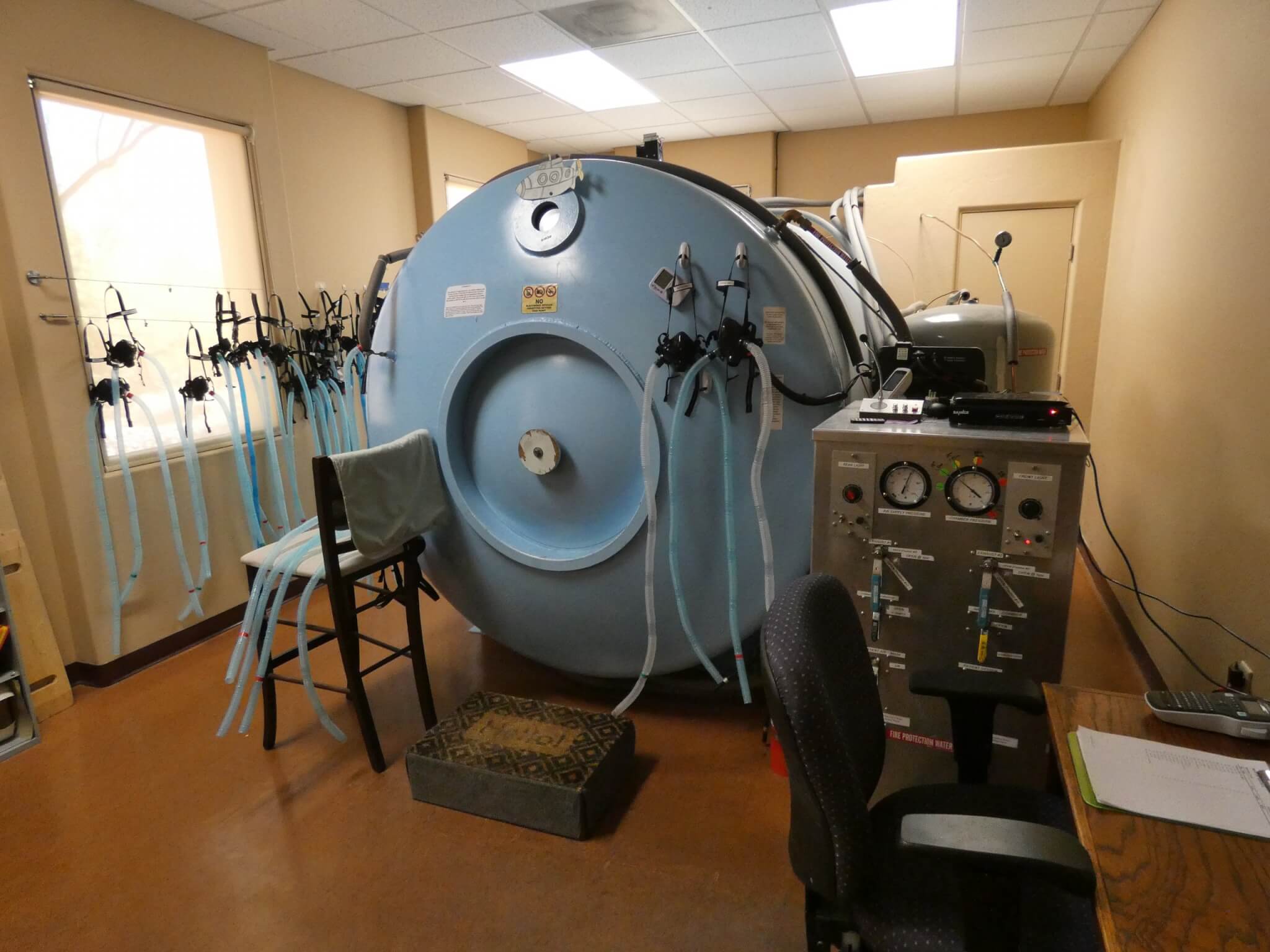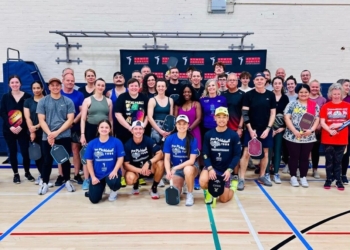Air Force veteran Brian Cherry couldn’t make it up a single flight of stairs in less than 15 minutes. Three decades of heavy drinking had destroyed his fitness levels and liver. He had experienced homelessness, joblessness and hopelessness. He was dying and wasn’t even sure he minded.
Hugo Frausto, a Marine veteran, couldn’t sleep. He often felt angry and depressed, flirting with the idea of suicide. Medication only made things worse, he said. He gave up hope that his life would ever get better.
Then both Cherry’s and Frausto’s health and mindsets completely changed, they said, when they turned to hyperbaric oxygen therapy, or HBOT.
Under pressure
HBOT takes place in a specialized cylindrical chamber, usually in a medical setting. The chamber is pressurized at a higher level than atmospheric pressure, slightly mimicking underwater conditions while patients breathe in medical-grade oxygen. The technology has been around for centuries and is used to treat a wide variety of conditions, including wound healing, scuba diver’s decompression sickness, infections, burns and carbon monoxide poisoning.
The idea is simple: by providing higher-than-normal amounts of pure oxygen in a controlled environment, damaged, oxygen-depleted cells are able to heal more quickly.
Dr. Carol Henricks first learned about HBOT in 2003. As a neurologist, she was intrigued, reading everything available on the topic. Henricks quickly became convinced of its uses for many ailments, including traumatic brain injuries (TBI) and PTSD, two conditions common amongst veterans who commit suicide.

“The brain is a very sophisticated organ, and there are all these different mechanisms of injury,” she said. “That’s why oxygen is so powerful. It activates all the healing mechanisms with the individual cells.”
Henricks serves as the medical director of Healing Arizona Veterans (HAV), a nonprofit dedicated to connecting former military members suffering from TBIs and PTSD to alternative treatments like HBOT. In the last two decades, she has treated more than 200 veterans through HBOT; at least half have come in the past two years alone.
“When veterans come to me, the joke is that they have full medical jackets,” Henricks said. “They bring all these bags of medication and say, ‘I don’t feel good, these pills don’t work.’”
Deep dives
That scenario certainly described Frausto, a two-time combat deployment veteran. VA physicians prescribed several medications for his sleeplessness and depression, but the side effects were taxing.
“The meds caused me to have flat emotions and unable to make connections with my loved ones,” he said. “I would also get really bad withdrawal symptoms whenever I would miss a dose.”
RELATED: Off-roading veterans get therapy, satisfaction through challenging competition
Frausto’s depression kept worsening, when a marriage counselor suggested HBOT.
“I was desperate for anything that would help me get my life back on track,” Frausto said, and HAV paid for his treatments.
To date, Frausto has spent approximately 85 hours in an HBOT chamber — 80 is typically considered a “full reset.” Each session is called a “dive,” usually an hour at a time. Patients can sleep, talk, doodle, read or daydream during the session.
“I am no longer on any medications and can sleep through the night,” Frausto said.
New hope through oxygen therapy
VA officials gave HBOT a shot from 2017 to 2021, paying for 27 veterans to undergo hyperbaric dives.
Today, though, HBOT “is not currently part of the standard of care for treatment of mental health conditions at VHA,” a VA spokesman wrote in an email. “HBOT is considered ‘off-label’ treatment for PTSD and TBI because it is not cleared by the FDA for these conditions.”
Officials there concluded that “HBOT is not an effective treatment for PTSD.”
Cherry, a 46-year-old Air Force veteran, disagrees. He began HBOT treatment in 2020 after Impact Montana, a nonprofit focused on veterans and first responders in the Treasure State, offered to pay. Previously, he saw VA physicians near weekly. Doctors gave him and his diseased liver mere months to live.
Yet Cherry beat the odds. After his completed HBOT regimen, doctors deemed his liver completely healthy, he said. He currently has a job, a home and a sober bill of health.
“Now, I’m pretty much working darn near 12- to 14-hour days,” he said. “I’m up at 5 a.m. at the gym, five times a week.”
As often as possible, Cherry preaches to other veterans to get in an HBOT chamber for oxygen therapy.
“I wish they would realize how truly effective it is,” he said. “Since I’ve been doing HBOT, I’ll bet you the VA people have forgotten who I am ― because I don’t have to go back anymore.”
Read comments






































